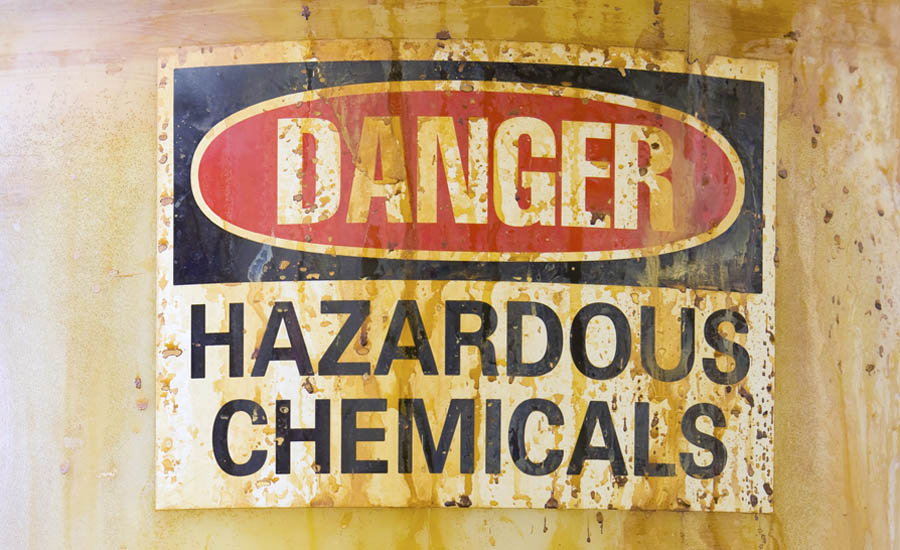Ethylene oxide (EtO) is a common, highly hazardous industrial chemical linked to breast cancer and immune system cancers like non-Hodgkin lymphoma and lymphocytic leukemia (see EPA IRIS Exec Summary, Dec 2016).
Concerned community members in Illinois made it a 2018 campaign issue after two federal agencies released studies showing elevated cancer risks outside Chicago. Due to the effort and organizing of their constituents, members of Congress are now taking action to combat the threat this colorless and highly explosive toxic gas poses to neighborhoods across the country.
EtO is made from ethylene, a petrochemical, and is used primarily to make ethylene glycol, a highly toxic chemical used in antifreeze and as a coolant for cars, gas compressors, and air conditioning systems. It is also commonly used as a sterilizer for medical equipment, and industrial sterilizing facilities around the country vent it, poisoning the air of nearby communities. EPA considers EtO emissions from sterilization facilities to be among the most hazardous air pollutants posing the greatest health risks in the largest number of urban areas.
State and federal agencies monitor EtO air emissions, but monitoring is far behind where it should be. Local, publicly-available data is either outdated or nonexistent. The EPA released its most recent National Air Toxics Assessment (NATA) in 2018, but the data is from 2014. The NATA is used as a screening tool to identify places of interest for more detailed study, so comprehensive local monitoring is still needed to pinpoint risk at specific places, like homes or schools, or to compare risks and exposures at local levels, like between neighborhoods, but the NATA is supposed to be the starting point.
Since 2014, EPA updated its Integrated Risk Information System (IRIS), estimating cancer risks from EtO exposure are 30 times worse than previously thought. This was based on a 2016 assessment of all available scientific studies including laboratory animal studies, cellular mechanistic studies, and workplace epidemiologic studies. EPA’s updated risk assessment confirms that EtO is carcinogenic to humans by inhalation (stronger than its previous classification of ‘probably carcinogenic to humans’).
In August 2018, the Agency for Toxic Substances and Disease Registry (ATSDR) within the U.S. Department for Health and Human Services (HHS) issued its final Health Consultation report on health risks posed by EtO air emissions from the Sterigenics facility in Willowbrook, a Chicago suburb. But the problem isn’t limited to this one facility.
The 2014 NATA already shows 58 EPA monitoring tracts in 18 different counties across 12 states that have EtO air emissions at levels that pose cancer risks higher than 1 in 10 thousand people. This is far higher than the 1 in 1 million that EPA considers an acceptable risk, which triggers federal regulators to notify polluters.
More than 288,000 people live in the monitoring tracts across the country that EPA identified to be at elevated risk of EtO exposure, and nine counties have facilities that are emitting more EtO than the Sterigenics Willowbrook facility.
This is not a singular issue affecting one suburb of Chicago, it’s a national issue that begs EPA action in how it monitors and regulates air toxics in general.
Successful efforts by community members and journalists in Illinois brought much needed public attention to EtO last year. Since then, Illinois Senators Durbin and Duckworth and Representatives Foster, Lipinski and Schneider introduced the Expanding Transparency Of Information and Safeguarding Toxics (ETO IS Toxic) Act, which directs EPA and ATSDR to modernize their pollution monitoring and chemical assessment programs. They’ve sent numerous letters already and plan to send more in the coming months.
EPA should update the National Air Toxics Assessment more frequently, coordinate more quickly and transparently with other agencies, and update and enforce stricter regulations on venting. Not only will it save lives if EPA takes these actions, it will help rebuild trust within local communities that the federal government really is trying to protect public health.
Source: Natural Resources Defense Council







